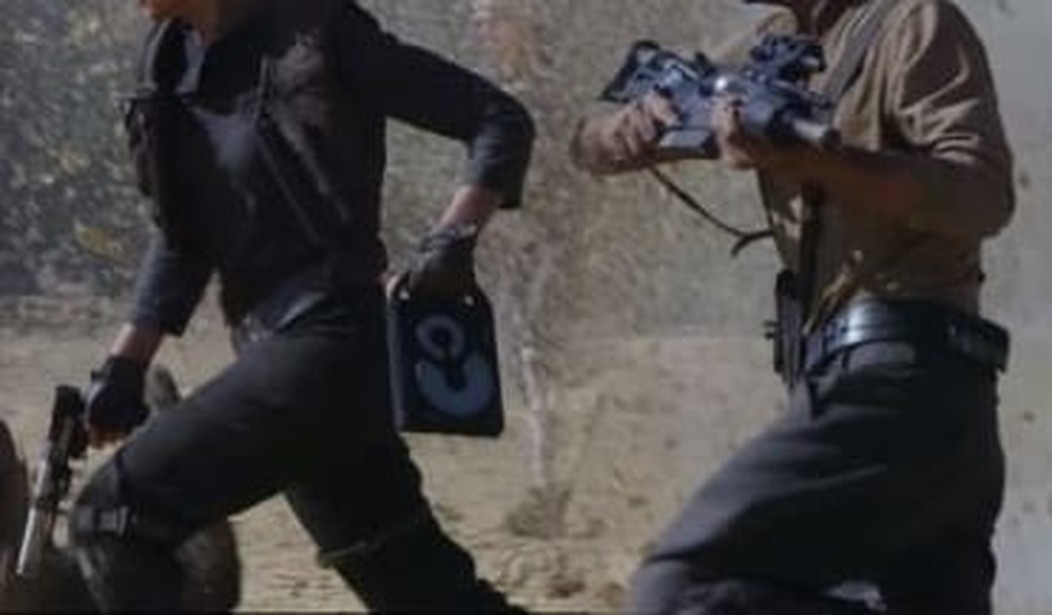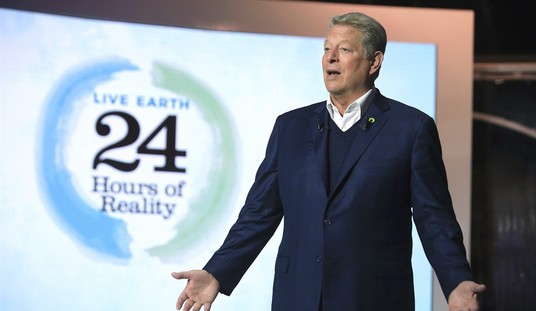On Sunday, I saw Rogue One: A Star Wars Story while visiting my old stomping grounds in San Jose’s mixed-use Santana Row development. I had watched Episode VII at this same theater, right around this time last year, so it’s possible to make some comparisons between the two audiences.
Our theater this time around was about three-quarters filled, unlike last year’s The Force Awakens, which was packed to Admiral Ackbar’s gills with attendees. And unlike last year, when there were one or two fellas in Jedi robes and at least one chubby middle-aged guy in Han Solo’s pants, collarless shirt, and vest, no one was dressed in costume. But both movies began with a healthy cheer when the Lucasfilm logo dissolved into the black screen with that familiar blue Helvetica text inviting us back to “a galaxy far, far away.”
What follows are my immediate thoughts after seeing the movie. There are a fair amount of spoilers below, so don’t read any further if you don’t want the plot ruined. You’ve been warned.
The Bland Is Strong in These Rebels
At least Episode VII had Harrison Ford’s dynamic presence to drive the movie, and his charisma and good will went far to mask the inadequacies of Daisy Ridley’s preposterous Mary Sue character.
About a third of the way through Rogue One, I came to my first conclusion about the movie, and I suspect I’m not alone: I don’t care about these characters. Particularly the film’s two leads, Felicity Jones in the role of Mary Sue, err, Marion Ravenwood err, Rey err, Jyn Erso and Diego Luna in the role of Han Solo, uh, Cassian Andor. The original (1977) Star Wars, cast largely with unknowns, at least was a film about that all-American archetype, the callow young farm boy going nowhere in life who’s accidentally thrust into an amazing adventure. Mark Hamill had a fresh-faced innocence, and his infectious “aw shucks” charm ingratiated his character remarkably well with the audience. He and Star Wars’ other young leads appeared happy to be working, presumably in the knowledge, as Lucas admitted afterwards, that with a little luck the film might make its budget back, and would be a decent B-movie on their resume as they went on to (hopefully) bigger and better things.
In contrast, right from the start Rogue One’s Felicity Jones is in full butt-kicking Action Grrrrl mode, in a film she already knows will print endless sums of money, and she can’t be bothered to charm the audience along the way.
Similarly, Forrest Whitaker’s Saw Gerrera (gee, nice Ché callback there, in case it wasn’t obvious which ideology the Rebels were modeled after) is there to be the Obi-Wan Kenobi character — the slightly mad elder statesman who is prepared to die, both because he knows he’s fought many hard battles and because the Force awaits him. But unless you’re familiar with Whitaker’s character from the TV cartoon Star Wars: The Clone Wars (a series I’ve never watched), again, why should I care about him? Though Gerrera vanishes somewhat ambiguously around the conclusion of the film’s second act, and I was hoping, like Obi-Wan and Han Solo showing up to guide Luke at the conclusion of the original Star Wars’ pitched space combat, that he would make an appearance in some form to help the young troops at the conclusion of their battle.
Perhaps it’s for the best he didn’t, as this Star Wars movie has an infinitely bigger bummer of an ending than the somber conclusion of The Empire Strikes Back.
(Spoiler alert: there’s a reason why none of the leads appear in Episodes IV through VII…)
What Could Go Wrong? Star Wars Discovers Identity Politics
As Kyle Smith wrote at Acculturated, “‘Rogue One’ Makes White Guys the Enemy of the Future.” But in a way, the newfound identity politics of Star Wars also works against the Rebellion’s reputation nearly as badly.
Watch Rogue One immediately before the original trilogy, and you’ll be left with the impression of a multicultural group of grunts doing the real dirty work and dying in large quantities, only for the lily-white cadre of Leia, Ben, Luke, and Han to ultimately receive all the glory — in a Leni Riefenstahl-inspired awards ceremony to boot!
In contrast to the new rebels, the baddies of Rogue One’s incarnation of the Galactic Empire are far more fleshed out, partially because we’ve seen two of the evil trio before. We already know who Grand Moff Tarkin and Darth Vader are. We can actually feel a twinge of sympathy when Director Krennic’s machinations are blocked by Tarkin and Vader. Vader is an absolute CGI killing machine in the film’s climax — but as with the casting of the Rebel leads, try not to think about it too much, or you’ll wonder why he’s so comparatively passive and sluggish in A New Hope, which begins almost immediately after the plot of Rogue One concludes.
While the expected interstellar battles are vividly depicted onscreen in Rogue One, at his main perch at the New York Post, Smith noted that the real special-effects triumph of the film is bringing Peter Cushing back to life as Grand Moff Tarkin, in one of Rogue One’s best performances. (Shades of how the computer-generated Jar Jar Binks stole Episode One for better or worse by being a far more human character than the way his flesh-and-blood counterparts were directed by Lucas.) A young Princess Leia also makes a cameo appearance, and curiously, looks far more waxworks than Tarkin. Perhaps Peter Cushing’s wrinkled and craggy visage adds a texture that, when modeled with CGI, looks more realistic than a digital recreation of Carrie Fisher’s pearlescent skin at age 19.
As for Diego Luna’s Cassian Andor, there’s so little back story revealed, again, that there’s no reason for me to care for the character. Their two sidekicks, played by Donnie Yen and Jiang Wen, are interesting, not so much for themselves, but for Star Wars trivia obsessives (err, like me) who know that Akira Kurosawa’s samurai films were a major inspiration for George Lucas writing the original Star Wars. Similarly, there are fleeting references to “the kiber crystal,” which was a plot element of the very first spin-off Star Wars novel, 1978’s Splinter of the Mind’s Eye. But otherwise, it’s just throwaway technobabble.
Hiroshima, Mon Calamari
As several critics have remarked, unlike the original films, in which a third of each film was spent on a different world (Tatooine, the Death Star, and Yavin in A New Hope; Hoth, Dagobah and Cloud City in The Empire Strikes Back), Rogue One flitters about from planet to planet, before we can make sense — or care — about why we’re on each planet.
And speaking of planets — and planet-killers — the Death Star is tested twice in Rogue One. But rather than destroying whole planets, everybody’s favorite beach ball of death destroys a pair of cities, one mid-film, the other at its conclusion*.
Given what we’ve seen in the original Star Wars, and in science fiction in general, we’re expecting an instantaneous laser blast and immediate obliteration. Instead, the slow-building, dust-filled blasts strongly resemble 1950s atom bomb footage. Lucas has on repeated occasions described the original Star Wars as his allegory for the Vietnam War, with the Emperor as Richard Nixon, and the Rebels as the North Vietnamese. Presumably the subtext here, particularly given the prominent pair of Samurai-style Rebels, is the two Death Star tests are symbolic of the A-bombs Harry Truman chose to drop on Hiroshima and Nagasaki. In his hilariously trolling Washington Post article last year titled “The destruction of Alderaan was completely justified,” Sonny Bunch concluded that “The Imperial Grand Moff Tarkin is no worse than Democratic President Harry S Truman — and no one worth listening to considers Truman to be a monster.” Well, other than the writers of this latest Star Wars episode, I guess!
When a film works — when the writing, the casting, the pacing (read: editing) are all on the same page, it becomes greater than the sum of its parts. When it doesn’t, it’s easy to feel that the filmmakers were desperately hoping to salvage the film in the editing bay, and about halfway through Rogue One, I was very much getting the latter feeling — and for good reason.
There are some science fiction films, such as Blade Runner, 2001: A Space Odyssey and Lucas’s first directorial effort, THX-1138, that you visit mostly to luxuriate in the production design. There are other science fiction films, such as the original Star Wars, Rollerball, Forbidden Planet, The Wrath of Khan, The Giver, and the first Matrix movie where the eye-popping production design serves as a mere backdrop for characters you emotionally invest yourself in as you strap in for the incredible ride. Sadly, Rogue One is in the former camp. Visually, you’ll feel right at home in this latest chapter set “a long time ago in a galaxy far, far away.” And you’ll revel in the incredible state of the art CGI effects.
And then you’ll ponder if it isn’t ultimately all much ado about, if not nothing, not much. Still though, this is the finest film about stealing a 1996-era Jaz Drive and disseminating its contents via wireless Internet that’s ever been made. Perhaps that’s something, after all.
———————
* And note that this second city destroyed was one of the empire’s own, and largely dominated by a tall office complex, which adds yet another potential anti-American subtext to its destruction.










Join the conversation as a VIP Member